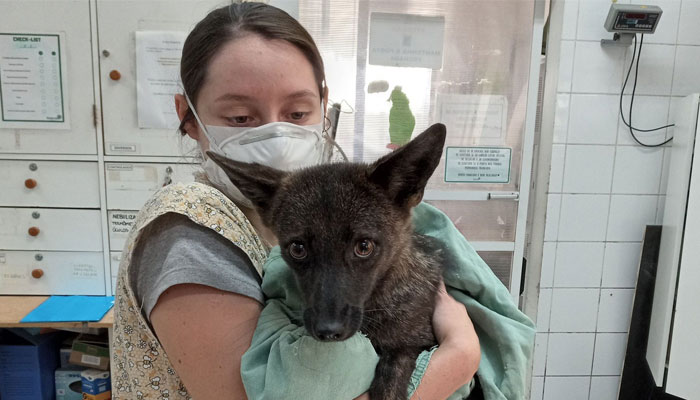First dog-fox hybrid 'Dogxim' passes away 2 years after discovery in Brazil
Experts said that the rare animal refused food and ate live rodents; barked like a dog
September 19, 2023

After two years of captivity, Dogxim, the first dog-fox hybrid passed away at the age of two under mysterious circumstances in a Brazilian facility, sparking an investigation into why the keepers of the animal failed to report the incident.
According to The Telegraph, the officials at the zoo it is also yet unknown when and how the unique animal died exactly.
Dogxim was found in Brazil when she was taken to a nearby veterinary hospital after being hit by a car in 2021.
A recent study reveals a rare fox-dog breeding, marking the first recorded instance where a pampas fox and a domestic dog of an unknown breed reproduced an offspring, according to experts.
The animal weighs the same as a medium-sized dog and has large, pointy ears, a long snout, a jet-black nose, and brown eyes. Its build is similar to that of a medium-sized dog, with a thick, black-brown coat with white and grey specks.
The young wild canid was named "graxorra" and "dogxim," a Portuguese term for the pampas fox and female dog, respectively. Its scientific name is a combination of "dog" and “xim," from the Portuguese word for graxaim-do-campo.
The animal had behaved unusually. It refused food and ate live rodents; barked like a dog but had a thick, dark coat similar to the fox; and was wary of people but warmed to them over time.
“She was an amazing animal, really a hybrid between a pampas fox and a dog,” Flávia Ferrari, a conservationist who worked with the animal during her recovery, told The Telegraph.
“It was not as docile as a dog, but it also lacked the aggressiveness expected of a wild canid when handled. She had a shy and cautious personality, generally preferring to stay away from people. Over the time she was hospitalised for treatment, I believe she started to feel safer.”
Despite its aversion to people, the dogxim eventually allowed some to approach if they were careful and composed, according to Ferrari.
“So, in some moments, she allowed herself to be touched and even caressed, also interacting and sometimes even playing with toys,” she added.
Scientists are unsure if the animal could have reproduced because it was neutered as part of her treatment, but they do think it was possible.
Dr Rafael Kretschmer, a cytogeneticist who ran the genetic analysis, said: “She is not a new species; she is a hybrid individual between two different species: pampas fox and domestic dog.”
The critically ill animal was treated at the Universidade Federal do Rio Grande do Sul veterinary clinic before being relocated to the Mantenedouro Sao Braz conservation facility in Santa Maria City. The local government planned the move, but the animal passed away this year.
This hybrid represents the first known instance of a dog mating with a member of the canis species.
Kretschmer said that the pampas fox is not closely related to European foxes but is more closely related to dogs. However, he added that hybridisation occurred between two species that are more phylogenetically distant than previously reported in other parts of the world.
The discovery, published in Animals, suggests that further research is needed to determine the fertility of these hybrids.











